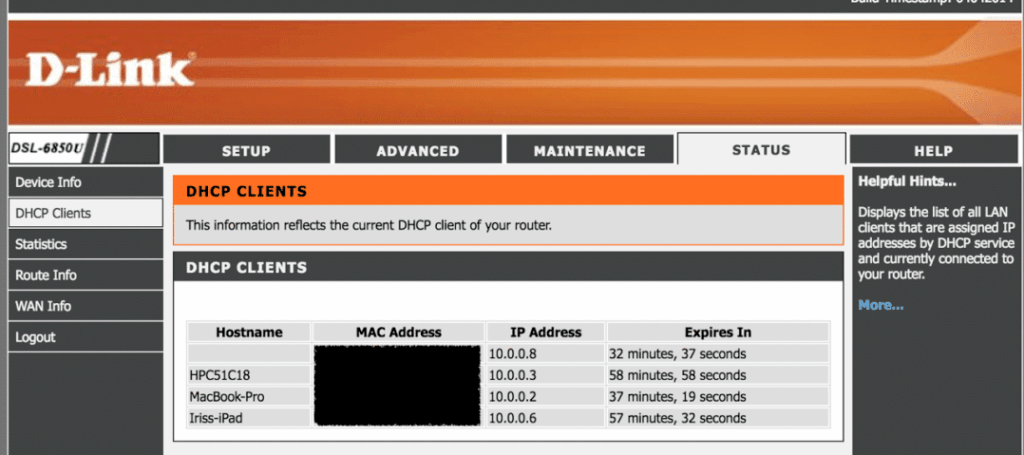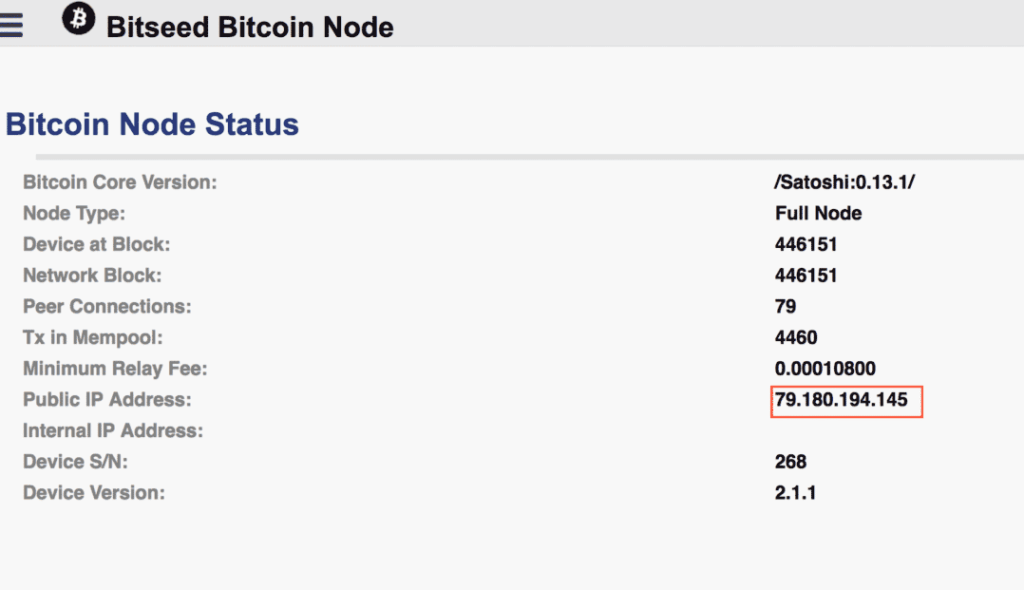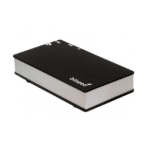The Bitcoin network is supported by different computers (also known as nodes) that run the Bitcoin software. It’s what creates the decentralization of the system – the fact that thousands of computers around the world own a full copy of the blockchain and are validating every transaction that goes through.
The more nodes the system has, the more tamper proof it is. At the moment there are 5655 nodes that support system. In the past I’ve written extensively on how you can help the network by setting up your own node at home, however the process can be a bit scary for newbies or people who don’t have extensive technical knowledge.
Today I want to review Bitseed – a product that claims to be a “plug n play” node for the average user. Just plug it into your router at home and you are instantly a part of the Bitcoin network by running your own personal node. Of course you can always use your personal computer for this but then you’d have to give away a large chunk of space from your hard drive in order to download the Blockchain to your machine.
With Bitseed things are simpler. The machine comes with the latest Bitcoin version and blockchain already installed (at the time of shipping of course). The developers claim that all that is left is to power it up and hook it to an Internet connection.
When you order the Bitseed you can choose between a few different hard disk sizes ranging from 480GB up to 2 TB (there is also a lite version that I won’t review here). The size of your hard drive will determine how long your Bitseed can operate as the blockchain increases in about 45 GB each year (in 2016 it increased in 43GB). I ordered my Bitseed about 2 months ago when there was also a 320GB version available.
Delivery of the Bitseed was pretty straight forward, however for some reason it’s not shipped with international tracking due to cost issues. Personally I wouldn’t mind spending a few more bucks in order to know where my package is every step of the way. After you order your product it can take 2-3 days until it is shipped. That’s because at the moment every Bitseed is made to order, so someone is actually installing the latest Bitcoin version and blockchain on your machine.
It took one whole month for the package to arrive at my house but that’s partially thanks to my country’s postal system that’s pretty crappy. Once it arrive I could barely wait to get it up and running.
But that’s when things went south…
For basic use all you need to do is connect the Bitseed to your router using an ethernet cable and power it up. Once powered, the device will automatically start within 2 hours. Bitcoin will catch up with the current block height and then run continuously, hosting a full bitcoin node.
This much any user can handle, however I wanted to make sure my Bitseed actually works. So after completing the instructions I tried accessing my device. To access your device you’ll need to find its IP address in your home network. If this sounds like gibberish then we’re in the same boat.
After some research I found out that every device connected to my router (e.g. my computer, Bitseed, my iPhone etc.) has an address in the form of numbers. For example, in the picture below you can see a computer, an iPad and a printer (HPC5….) connected to the router but no Bitseed.
BTW – In order to get to this screen I had to log into my router, I used this tutorial to understand how to do it.
So for some reason my Bitseed was either not connecting to the router or just not starting up. I was pretty much lost. So much for plug n play…
I spent the next 4 hours with techy friends trying to debug this remotely but nothing seemed to work. I’ve sent Bitseed’s developers a support request however they said that on first appearance it seems that the disk drive was not found, which means something got damaged in shipment.
Finally I decided to hand over the machine to one of my friends at the Bitcoin embassy to take a look at it himself. After a few days he told me he managed to get it up and running without doing anything special.
The result is that after 2 weeks of hard work for no apparent reason the Bitseed was up and running in the Bitcoin embassy in Tel Aviv and a new node was supporting the Bitcoin network.
Once it was working I could access my Bitseed control panel by entering the device’s local IP address into my browser (the exact same address I was trying to find before).
as you can see my device has about 52GB of free space which means it will probably last through the rest of 2017. In order to check that my Bitseed is actually part of the Bitcoin network I can check the node status via the home page of the control panel.
So my Bitseed is running the latest Bitcoin Core version (which includes Segwit) and my public IP address is also listed on this page. There device currently has 79 connections to other nodes in the network.
In order to verify that my bitseed is currently accepting incoming connections from other nodes I can also use the tool supplied by 21.co at the bottom part of this page. All I need to do is enter my public IP address and hit “Check node”. Keep in mind that the Bitseed will shut down for 30 minutes once a week during the time it’s backing up the blockchain, If you try to reach the node on that specific time you won’t be successful.
My conclusion about Bitseed
The idea of a plug n play Bitcoin node is awesome and I think we need something like this in the community. However the implementation of Bitseed if far from perfect. The device didn’t work “as advertised”, support was laggy and just stopped responding at one point. If I wasn’t so persistent in getting this machine to work I would have probably given up after one or two hours. It feels as if this is a side project for the founders of Bitseed and therefor you can’t expect to be fully supported even once you become a paying customer.
I’m sorry to say that at its current state Bitseed isn’t a good buy, it has more chance of disappointing the buyer than making him satisfied. Of course this is my own personal opinion after experiencing what I’ve described above, your luck may be different.

 13 Comments
13 Comments







“To access your device you’ll need to find its IP address in your home network. If this sounds like gibberish then we’re in the same boat.”
Are you kidding me?? IP address and home network are gibberish for you…? How are you writing for a tech site? Frustrating reading through that.. Hope you’ve studied up since writing this.
I assume the issue was you just not understanding how to make sure the miner was on your own network?
Hi Alexander,
I was looking for exactly this kind of simple full node set-up. Interesting that it was not as easy as advertised. Anyway I have come to be a strong believer in BTC (Core) and will try my luck, confident I will manage to set this up.
Best regards,
Chris
Thanks for the feedback Chris. We hope you enjoy the setup.
Does this support Bitcoin Unlimited?
No, only Bitcoin Core as far as I know
Hi Alexander,
Thank you for this thorough review of Bitseed! I’m a co-founder of the project and want to address some of the issues you highlighted. One of the biggest pain points for users is definitely accessing the Bitseed Web UI for the first time. While the device is “plug-and-play” in that it is designed to “just work” once you plug it into power and your router, this comes with two caveats:
First, the node will only automatically forward port 8333 to upload data to the Bitcoin network if your router supports UPnP. If your router does not support UPnP, then the node will also attempt to automatically connect to other Tor nodes. We bundle Tor with Bitcoin Core as a fallback so that even if your router does not support UPnP, you can still support the network by uploading blockchain data to other Bitcoin nodes connected through Tor. More info about Tor support can be found here: https://github.com/bitcoin/bitcoin/blob/master/doc/tor.md#3-automatically-listen-on-tor
Second, to find out whether the node is actually working, it does take some extra work to access the Bitseed Web UI. We decided to take this approach rather than put a screen on the node that would display this information to save our users money. We haven’t received an overwhelming number of requests to add a screen to the node, although this could be an option we offer in the future.
We include basic instructions for accessing the Bitseed Web UI with the documentation that comes packaged with each node, but unfortunately we can’t be too specific because the instructions vary based not only on what operation system you are running on your personal computer but also what kind of router you are using. Since there are dozens of routers out there, it would be very difficult to offer exact instructions for each. We are working on making this process easier but it will take time to ship a complete solution.
Regarding your comments about support, your frustration is completely justified. We try to answer every inquiry as quickly as possible, and most are answered within 48 hours. In this case, there was a misunderstanding internally about who would respond to your last inquiry and the request went unanswered. We apologize for the mix up and thank you for highlighting this fault in our support system. We are now discussing how we can improve the system to make sure that this does not happen again.
You mention 21.co as a way to see if your node is online. Another way is to just see if the number of “incoming connections” on the Bitseed Web UI home page is greater than eight. I can see in your screenshot that you have 79 peer connections, so this would indicate to me that your node has port 8333 forwarded correctly and you are successfully uploading data to the network.
If you want to free up space on your hard drive, you have two options: disable backups and/or disable indexing. Every Bitseed node comes with a complete backup of the Bitcoin blockchain that makes it faster to restore in case the main copy of the blockchain is corrupted for any reason. Indexing is turned on so that users can access granular information about Bitcoin transactions via the RPC interface or RESTful API. More info about indexing here: https://bitcoin.stackexchange.com/questions/35707/what-are-pros-and-cons-of-txindex-option#35708
You can disable backups by unchecking “Blockchain Backup Enable” in the Settings page.
To disable txindex, SSH into the node via the command line then access the bitcoin.conf file and set txindex from “1” to “0”, then save and exit the configuration file. If you need more detailed instructions for this, we can provide them to you over email (note to self: publish these instructions on our website).
Thanks again for your thorough review! If you or anyone reading this have any other questions or concerns we can be reached at http://www.bitseed.org/contact
Cheers,
John
Thanks John, appreciate your thourough and honest response to the post.
I wonder what does this bitseed do aside from running as support to bitcoin network. What good does it bring to a total newbie like me? Does it mine bitcoin?
Im sorry if my question appears stupid but that’s who I am. I am ignorant to bitcoin. Although im planning to engage in mining but I still dont have enough knowledge about it.
Hey Juvy, your question is totally in place.
It doesn’t do anything other than supporting the Bitcoin network, and that’s exactly the reason there aren’t enough nodes today, because there is no inherent value in running one.
Another benefit in addition to supporting the Bitcoin network is that users can verify that transactions they are interested in have been confirmed by the network. This is perhaps the most important reason to run a Bitcoin full node, since Bitcoin was designed to eliminate the need to trust third parties for transaction verification.
How do you verify your own transactions?
Hey Craig,
Good question. The short answer is running your own full node wallet or a light wallet connected to your own full node will automatically verify your transactions to an optimum degree.
Running your own full node gives you a lot more certainty in the information reported by your wallet, likes incoming transactions and balances. This holds true only if your wallet is connected to that full node – or in the case of a full wallet like Bitcoin Core, the wallet *is* the full node.
It’s possible to connect light wallets like Electrum and even mobile wallets like Samurai to your personal full node, which they’ll then use as the source of all blockchain data.
If a light wallet is getting its view of the blockchain from a third party full node(s), then there is a degree of trust involved as any remote node could conceivably transmit misleading information.
As far as I know, this has not occurred to any serious degree whereby anyone was defrauded of large sums of money. Light wallets have built-in checks and defences against this kind of thing.
There would certainly be a major effort to get people to use full nodes if such fraud was common or even occasional – just like everyone will tell you not to leave coins on exchanges, because major losses have occurred in the past as a result.
Nevertheless, such attacks on light wallets are at least a theoretical possibility so it’s recommended to run your own full node whenever practical. As mentioned above, doing so also supports the network.